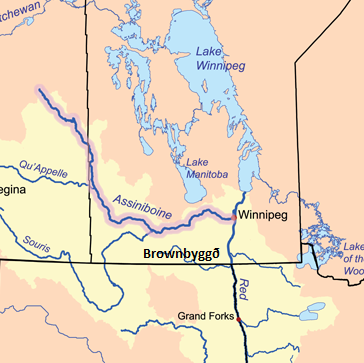Icelandic settlers:
By 1876, Manitoba’s provincial government had surveyed and set aside a large area of land for some religious denominations. Settlement was expected to begin immediately in the area, but the Mennonites, as the sect was commonly called, dragged their feet and the first settlers were not identified, nor did they show up at the Winnipeg Settlement Office to claim land in the area. Some of them worked in a forest in the district but did not farm. The years passed and it was shortly before the turn of the century that the district government finally advertised lands in the area and now everyone could take land there.
The Brown Settlement, as the Icelanders called the area, is in southern Manitoba and borders the United States. Around 1900, there were large forests in many places along with wetlands, swamps and ponds, but everything was dried up when the settlement began and the land was cleared. The Pembina River flows through the southwestern part of the settlement along a fairly deep valley. There was good pasture.
At that time there was discontent among people in the Icelandic settlements in N. Dakota, especially in the Garðar and Eyford settlements. The reason was that there was no land in these settlements for those who wanted to start farming. These were both young men who had grown up in N. Dakota in their ancestral homes and there were also some newcomers from Iceland. Exploratory expeditions also started from Hallson and the Akra Settlement southwest of Langdon but found no promising land on those travels. Others went east to Minnesota and north to Whitemouth Lake in Manitoba but returned disappointed. A Norwegian settler, Bótólfur Olson, was very important in the early years of the Icelandic settlement in N. Dakota; he directed the settlers to a good area where Mountain now sits. He moved north to Manitoba, changed his name from Olson to Holo, but the Dakotans sought him out again. He proved to be good to them and pointed out large areas along the border.
Manitoba law at the time allowed one person to go to an office in Winnipeg and take land for a large number of people by paying $10 for each settler. The Dakotans sent their monies from the various settlements of individuals who undertook this task. They traveled to Winnipeg and completed the transactions. In early May 1899, Icelandic settlement began when a few Icelanders moved to their lands to build homes. There were log cabins with thatched roofs and when that was done, they returned to N. Dakota and picked up their families and belongings. Quite a few families settled in the settlement that year as well as next.
English version by Thor Group.
